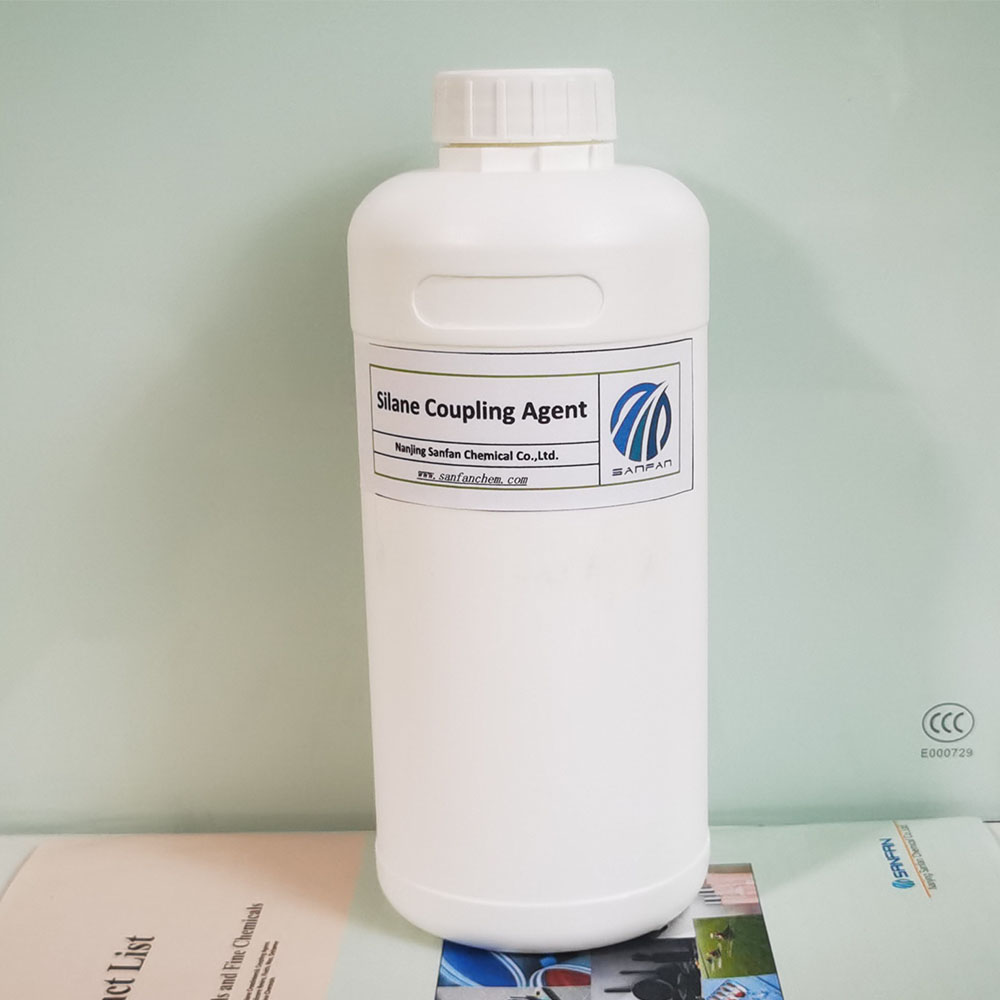In the sizing solution, the coupling agent acts as a "bridge" to bind the fiber to the polymer. There is an intermediate phase between the glass fiber and the resin matrix, which is crucial to determine the properties of fiber-reinforced plastics. Commonly used coupling agents usually only affect thermosetting plastics and have little effect on thermoplastics, especially when the resin has few or no polar groups. For fiber-reinforced plastic composites, the limitation is that the toughness of the material decreases while the strength increases. In addition, the matrix polymer is limited due to the available sizing solutions for fiber surface modification. Therefore, methods such as treating glass fibers with coupling agents and grafting polymer chains to the fiber surface are alternative methods to improve the properties of glass fiber-reinforced plastics.
An organic silicon monomer with two or more different reactive groups in the molecule, which can chemically bond (couple) with organic and inorganic materials. The chemical formula of silane coupling agent is: RSiX3. X represents a hydrolyzable functional group, which can couple with methoxy, ethoxy, cellosolve, and inorganic materials (glass, metal, SiO2). R represents an organic functional group, which can react with organic groups such as vinyl, ethoxy, methacrylate, amino, thiol, as well as inorganic materials, various synthetic resins, and rubbers.
By using silane coupling agents, a "molecular bridge" can be built between the interfaces of inorganic and organic substances, connecting two materials with very different properties together to improve the performance of composite materials and increase the bonding strength.
This characteristic of silane coupling agents was first used in glass fiber reinforced plastics (FRP) as a surface treatment agent for glass fibers, which greatly improved the mechanical properties, electrical properties, and anti-aging properties of FRP. Its importance in the FRP industry has long been recognized. The use of silane coupling agents has expanded from glass fiber reinforced plastics (FRP) to glass fiber surface treatment agents for glass fiber reinforced thermoplastics (FRTP).
Recommended coupling agents for glass-reinforced laminates
Item | CAS No. | Chemical Name |
919-30-2 | 3-Aminopropyltriethoxysilane | |
171869-90-2 | Vinylbenzylaminofunctional trimethoxy silane | |
2530-85-0 | γ-Methacryloxypropyltrimethoxysilane | |
2530-83-8 | (3-Glycidyloxypropyl)trimethoxysilane | |
1067-53-4 | Vinyl-tris(β-methoxyethoxy)silane |


